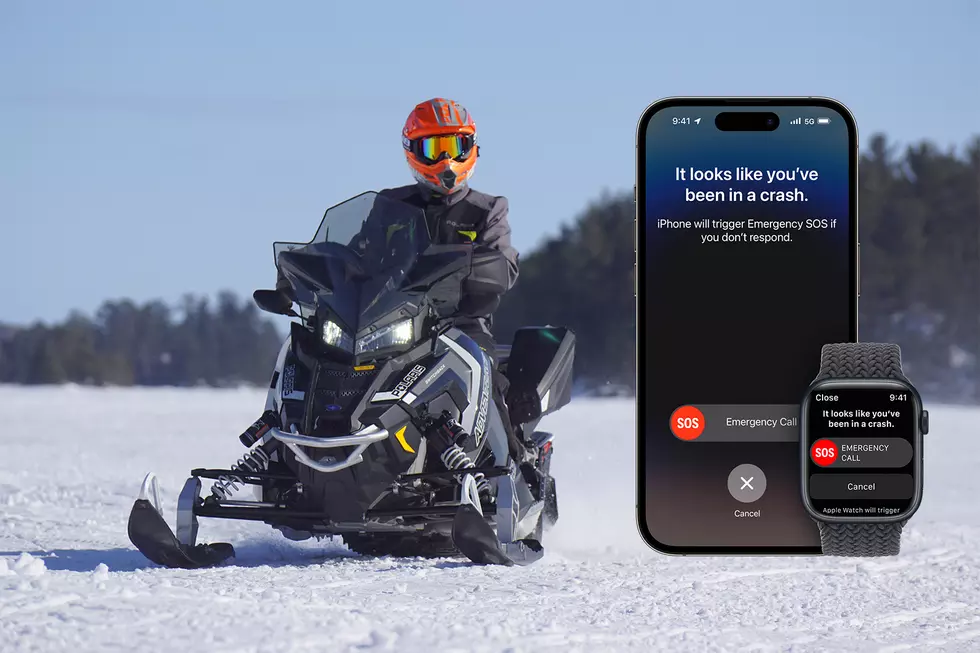
Here’s How To Turn Off That iPhone + Apple Watch SOS Feature Law Enforcement Keep Talking About
The latest iPhone and Apple Watch include a new feature called "crash detection", designed to automatically call emergency responders if you are in an accident. In theory, this sounds like an incredible idea. If you're in an accident - and potentially incapacitated - your phone will automatically call 911 to get you help right away.
This is a new addition that builds on an older Apple Watch feature called "fall detection", designed to call for help if someone has fallen and does not get back up in a certain amount of time.
The problem with this new crash detection feature is that it is creating a lot of false alarms, especially in colder-weather climates like Minnesota and Wisconsin.
What is Apple's Fall Detection?
This is a new feature available on Apple's latest iPhone (the iPhone 14 and 14 Pro line of phones) and the newest Apple Watch (Apple Watch 8, Apple Watch SE 2nd generation, and Apple Watch Ultra).
Any of the above-listed devices, with the latest version of iOS or WatchOS, automatically will sense a crash and call authorities.
Apple says the feature "is designed to detect severe car crashes—such as front-impact, side-impact, and rear-end collisions, and rollovers—involving sedans, minivans, SUVs, pickup trucks, and other passenger cars."

The phone or watch does this by using the gyroscopic sensors in your device to sense being tossed or bounced around. Once this type of movement is sensed, your phone or watch will display the message below along with a sound and vibration.
If this happens, the user has the option to either hit "cancel" if it is a false alarm, or to swipe "emergency call" to have your device call for help. Additionally, if you don't respond for 20 seconds, your phone or watch will call for help automatically, under the assumption you are incapacitated in some way.
Why is it causing problems in Minnesota and Wisconsin?
For people snowmobiling, tubing, skiing, or enjoying some other winter outdoor activities, this is creating false alarms. A person's watch/phone will detect being bumped around, and most often, people might not have their phone readily accessible - all tucked away under their layers of clothing.
This often leads to people not even realizing their phone is asking them if they've been in an accident. After 20 seconds of no response, the phone or watch assumes you're injured, and calls for help.
The first of a number of cautionary messages came from the Stearns County Sheriff's Department earlier this winter, asking users of Apple Watches to be aware of the new feature and temporarily turn it off when partaking in activities that might bounce you around.
Since then, other law enforcement agencies have issued similar messages, most often related to snowmobiling. Earlier this week, the Bayfield County Sherriff's Office shared that they had received multiple false alarm calls due to this feature.
It isn't just limited to Minnesota and Wisconsin, however. A number of other false alarm stories are popping up around parts of the country, including skiers in New York and others. Apple has acknowledged the issue of false alarms, saying they are "getting feedback" from 911 call centers. Apple says they are working on a solution, but no specifics have been offered at this time.
While the feature is having some issues, it isn't all bad news. There have been stories of the feature doing exactly what it was intended to do, allowing for quick response in emergency situations.
With the potential benefits, the advice from law enforcement is to temporarily turn off the feature when participating in activities that might trigger a false alarm.
How do you turn Fall Detection off?
Apple lists a pretty simple series of steps to turn the feature on or off. Here's how to do it:
On an iPhone
- Open your phone's settings app
- Tap "Emergency SOS" (you can also search for this in your settings)
- Turn off "Call After Severe Crash"
On an Apple Watch
- From your iPhone, open the Apple Watch app
- In the "My Watch" tab, tap "Emergency SOS"
- Turn off "Call After Severe Crash"
You can simply turn the feature back once you're done with your bouncy activity.
While Apple hasn't said what their plans are to fix the feature, one that comes to mind for me is a "temporary off" option, either as a toggle in the Control Center on your device, or as a "Focus Mode", similar to those you can set up for alerts and other things when working, sleeping, driving, etc. Having a "Focus Mode" you could temporarily turn on that will turn off after a pre-designated time (or with user intervention) seems like the easiest fix to me - but I'm not an Apple engineer.
LOOK: These Are the 50 biggest retailers in America
More From MIX 108









